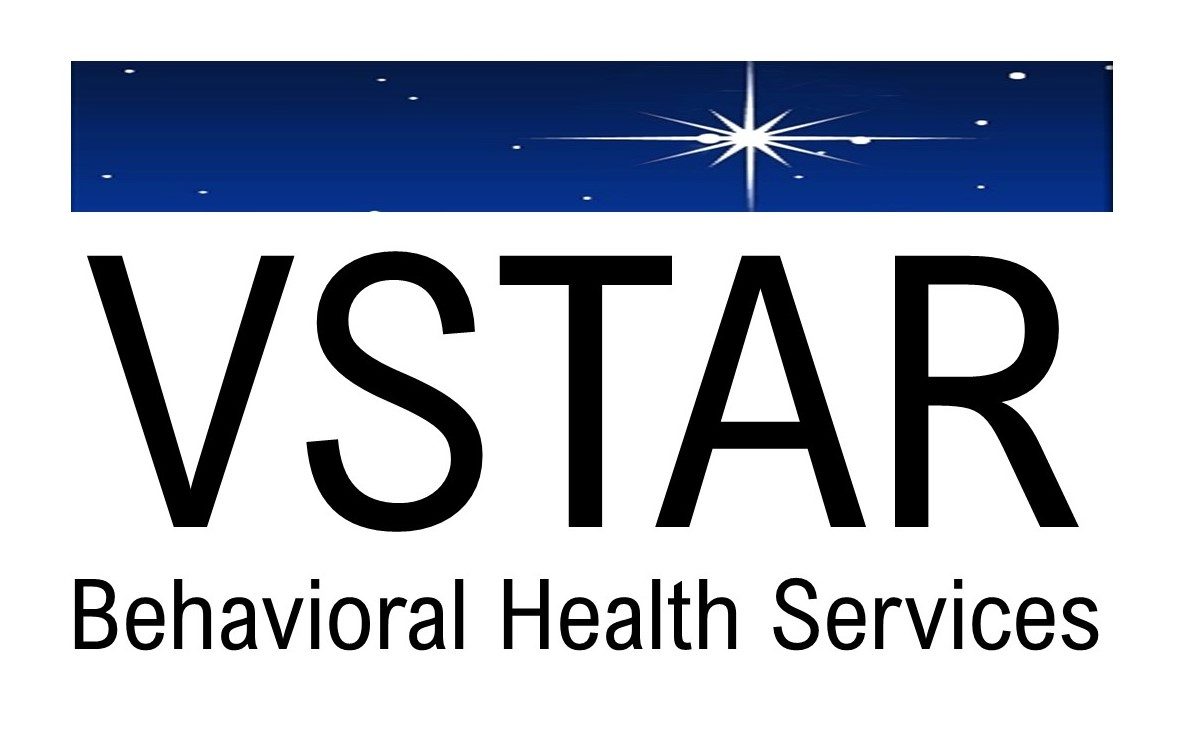
What Are Evidence-Based Practices?
To establish an evidence-base through research, a practice is evaluated using scientific methods that measure the impact of the practice on treatment outcomes.
When the term “evidence-based practice” is used to describe a treatment or service, it means that the treatment or service has been studied, usually in an academic or community setting, and has been shown to be effective, in repeated studies of the same practice and conducted by several investigative teams.
PARENT MANAGEMENT TRAINING-OREGON MODEL (PMTO)
PMTO views parents as the primary agents of intervention. It targets all family members and subsystems within the family (e.g., siblings, parents/couples). The program teaches parents basic behavioral principles, how to define, track, and record rates of antisocial and prosocial behaviors, as well as how to design, role play, carry out, and refine behavior modification programs and assess the effectiveness of the interventions used. It is designed for children and adolescents who display serious behavior problems from preschool through adolescence. The model has been used effectively for difficulties such as overt antisocial behavior (e.g., aggression, defiance, hyperactivity, fighting, covert antisocial behavior (e.g., lying, stealing, truancy, fire setting), internalizing problems (depressed mood, peer problems, deviant peer associations), delinquency, substance abuse, and academic failure. It is also used for families who have multiple difficulties, such as parents who have mental health problems, marital/couples conflicts, those undergoing divorce and membership changes (e.g., new marital partners and children), and those living in impoverished circumstances. PMTO synthesizes social learning principles and techniques, strategic family therapy, and applied behavioralanalysis into an intervention designed to assist in the development of parenting skills. During sessions the therapist is very active and starts with a brief overview of concepts, then models the techniques for parents, and coaches them in their implementation of the techniques.
The techniques and interaction patterns practiced in the sessions are then used (in vivo) at home. Parents are taught to define, observe, and record behavior in order to define behaviors
(E.g. fighting, engaging in tantrums) so they can use positive reinforcement (e.g., contingent delivery of attention, praise, points) and punishment techniques (e.g., time out from reinforcement, loss of privileges, and reprimands) contingent on the child’s behavior. They learn to provide consequences consistently, attend to appropriate behaviors, ignore inappropriate behaviors, apply skills in prompting, shaping, and fading, and apply these techniques to manage future problems. PMTO seeks to alter coercive family process (i.e., the contingent use of aversive behaviors), and enhance behaviors that are desired. It teaches problem-solving skills and promotes positive involvement with the child.
Parents acquire the following effective parenting skills:
– Skill encouragement which entails teaching new behaviors with the application of positive contingencies
– Limit setting which entails discouraging deviant behavior through the use of negative non-corporal sanctions
– Monitoring/supervision by attending to children’s behavior at home and away from home
– Family problem-solving skills consisting of interpersonal planning trouble shooting, contingency agreements
– Positive involvement by displaying interest, attention, and caring behaviors
FAMILY THERAPIES
Family therapy has a long research history with a range of studies, of varying quality, documenting its efficacy. A series of meta-analyses found family therapy to be effective alone or as part of a multimodal approach for children with conduct problems, enuresis, eating disorders, mood and psychotic disorders. A number of treatment manuals are available for the various family therapies. This section offers an overview of some models of family therapy.
– Structural: A family therapy designed to restore family boundaries and equilibrium
– Strategic: A family therapy that reframes perceived problems to provide new perspectives
– Milan Systemic: A family therapy that positively connotes family relationships to alter interactions
– Narrative: A family therapy in which families are taught to construct new stories and ways of interpreting events
– Psychoeducational11: A family intervention that employs a combination of behavioral and structural techniques to teach relatives about the causes and courses of a family member’s mental illness and helpful ways to respond. The aim is to decrease expressed emotion (EE). Relatives’ groups and family sessions are used.
– Behavioral: A family therapy that uses operant conditioning, contingency contracting, communication training, and problem-solving skill development techniques
– Brief Solution-Focused: A family intervention that promotes increases in a family’s focus on solution
BRIEF STRATEGIC FAMILY THERAPY (BFST) Brief Strategic Family Therapy is a short-term, problem-focused intervention with an emphasis on modifying maladaptive patterns of interaction that was developed in 1975 at the Spanish Family Guidance Center of the Center for Family Studies, University of Miami. It uses a structural family systems framework to improve family interactions that are presumed to be directly related to children’s behavior problems. It is designed for families with children and adolescents aged six to seventeen who are displaying, or at risk for developing, behavior problems including conduct problems, relationships with peers who engage in antisocial behavior, early substance use, and problematic family relations. BSFT has been adapted for African American and Hispanic/Latino families living in inner cities. (Therapists are trained to assess and facilitate healthy family interactions based on cultural norms of the family being helped.)
BSFT fosters the development of parental leadership, appropriate parental involvement, mutual support among adult care givers, family communication, problem-solving skills, clear rules and consequences, and shared responsibility for family problems. In addition, outreach strategies are used to bring families into therapy. The therapy is based on each family’s unique characteristics that surface when family members interact, and the manner in which the family system influences all members of a family. (Such repetitive interactions [i.e., the manner in which family members interact and behave with regard to one another] can be either effective or unproductive.) BSFT targets interactional patterns that are directly related to children’s behavior problems and helps families develop more effective patterns of interaction.
CBT
Developed by Dr. Aaron T. Beck, Cognitive Therapy (CT), or Cognitive Behavior Therapy (CBT), is a form of psychotherapy in which the therapist and the client work together as a team to identify and solve problems. Therapists use the Cognitive Model to help clients overcome their difficulties by changing their thinking, behavior, and emotional responses. Cognitive therapy has been found to be effective in more than 1000 outcome studies for a myriad of psychiatric disorders, including depression, anxiety disorders, eating disorders, and substance abuse, among others, and it is currently being tested for personality disorders. It has also been demonstrated to be effective as an adjunctive treatment to medication for serious mental disorders such as bipolar disorder and schizophrenia. Cognitive therapy has been extended to and studied for adolescents and children, couples, and families. Its efficacy has also been established in the treatment of certain medical disorders, such as irritable bowel syndrome, chronic fatigue syndrome, hypertension, fibromyalgia, post-myocardial infarction depression, no cardiac chest pain, cancer, diabetes, migraine, and other chronic pain disorders.
Family Interventions—Family Therapy, Parent Training, and
Family Education and Support
Evidence-based family interventions include family therapy, parent training, family education and support. These interventions recognize the important role of families in helping a child who is struggling with mental health disorders, substance use, and disruptive behaviors. Family based treatments involve parents and caregivers as essential partners and recognize that they need special skills to address their child’s challenging emotions and behaviors. The following are evidence-based family interventions.

Brief Strategic Family Therapy (BSFT)
Description of Intervention: BSFT focuses on improving the interactions between the family and the child. This intervention creates a positive relationship between a counselor and the whole family by looking at family strengths and conflicts in interactions between family members. This allows the counselor and family to develop and implement strategies that build on family strengths to correct problems. Therapeutic strategies include building conflict resolution skills, providing parent coaching and guidance, and improving family interactions to reduce problem behaviors.
Functional Family Therapy (FFT)
Description of Intervention: FFT is a family-focused therapy designed to engage families to decrease the intense negativity in their lives that may include mental illness in a child or parent, school dropout, and substance use. FFT works to motivate youth and families to change behavior. The behavior change comes through skill training in family communication, promoting positive parenting, problem solving, and conflict management skills.
Parent Management Training (PMT)
Description of Intervention: PMT is designed to help parents develop effective child behavior management skills, often for children that have difficult and disruptive behaviors. In PMT, therapists work directly with parents to help them acquire effective skills to use with their child.
Parents are taught how to effectively set limits, enforce consequences, reinforce positive behaviors, and enhance behaviors at home and in school. The training programs are individualized for the unique needs of each family. Therapists maintain close telephone contact with families between sessions to help reinforce the skills they have learned, and to be informed about progress and problems that may have arisen. Children and adolescents learn new skills through PMT that help improve their behavior and relationships at home and in school.
Average Length of Intervention: 4 to 6 months, may vary with the severity of need.

Family Education and Support
Description of Intervention: Family Psychoeducation is an evidence based practice in adult mental health. The Substance Abuse Mental
Health Services Administration (SAMHSA) and Center for Mental
Health Services (CMHS) tool kit on EBPs for adults includes resources on family psychoeducation. Family psychoeducation programs are designed to achieve improved outcomes for people living with mental illnesses by building partnerships among consumers, families, providers, and others supporting the consumer and family. Family psychoeducation programs are often led by clinicians and can also be led by family members. These programs focus on creating an atmosphere of hope and cooperation.
Through relationship building, education, collaboration, and problem solving, these programs help consumers and families to:
• Learn more about mental illnesses and effective treatment options;
• Master new and effective ways to manage the illness;
• Acquire strategies for handling crises and relapse;
• Provide social support and encouragement for each other;
• Teach caregivers to reduce stress and to take care of themselves;
• Focus on hope and the future; and
• Help families better understand how to help consumers on their road to recovery.
Research shows that family psychoeducation programs have led to improvements in functioning for adults living with mental illnesses.
What is Solution-focused Therapy?
Solution-Focused Brief Therapy (SFBT), also called Solution-Focused Therapy, Solution-Building Practice therapy was developed by Steve de Shazer (1940-2005), and Insoo Kim Berg (1934-2007) and their colleagues beginning in the late 1970’s in Milwaukee, Wisconsin. As the name suggests, SFBT is future-focused, goal-directed, and focuses on solutions, rather than on the problems that brought clients to seek therapy.
The entire solution-focused approach was developed inductively in an inner city outpatient mental health service setting in which clients were accepted without previous screening. The developers of SFBT spent hundreds of hours observing therapy sessions over the course several years, carefully noting the therapists’ questions, behaviors, and emotions that occurred during the session and how the various activities of the therapists affected the clients and the therapeutic outcome of the sessions. Questions and activities related to clients’ report of progress were preserved and incorporated into the SFBT approach.
Since that early development, SFBT has not only become one of the leading schools of brief therapy, it has become a major influence in such diverse fields as business, social policy, education, and criminal justice services, child welfare, domestic violence offenders treatment. Described as a practical, goal-driven model, a hallmark of SFBT is its emphasis on clear, concise, realistic goal negotiations. The SFBT approach assumes that all clients have some knowledge of what would make their life better, even though they may need some (at times, considerable) help describing the details of their better life and that everyone who seeks help already possesses at least the minimal skills necessary to create solutions.
CHILD THERAPY
Treatment activity designed to prevent deterioration, reduce maladaptive behaviors, maximize skills in behavioral self-control, or restore or maintain normalized psychological functioning, reality orientation and emotional adjustment, thus enabling the child to function more appropriately in interpersonal and social relationships. A child mental health professional may provide child therapy on an individual or group basis with a family-driven, youth-guided approach.
Telepractice/Telehealth is approved for Individual Therapy or Family Therapy using approved children’s evidence-based practices (i.e., Trauma Focused Cognitive Behavioral Therapy, Parent Management Training-Oregon, Parenting Through Change) and utilizes the GT modifier when reporting the service. Qualified providers of children’s evidence-based practices have completed their training in the model, its implementation via telehealth, and are able to provide the practice with fidelity
CRISIS INTERVENTIONS
Unscheduled activities conducted for the purpose of resolving a crisis situation requiring immediate attention. Activities include crisis response, crisis line, assessment, referral, and direct therapy.
The standard for whether or not a crisis exists is a “prudent layperson” standard. That means that a prudent layperson would be able to determine from the beneficiary’s symptoms that crisis services are necessary. Crisis situation means a situation in which an individual is experiencing a serious mental illness or a developmental disability, or a child is experiencing a serious emotional disturbance, and one of the following applies:
⦁ The individual can reasonably be expected within the near future to physically injure himself, or another individual, either intentionally or unintentionally.
⦁ The individual is unable to provide himself food, clothing, or shelter, or to attend to basic physical activities such as eating, toileting, bathing, grooming, dressing, or ambulating, and this inability may lead in the near future to harm to the individual or to another individual.
⦁ The individual’s judgment is so impaired that he is unable to understand the need for treatment and, in the opinion of the mental health professional, his continued behavior as a result of the mental illness, developmental disability, or emotional disturbance can reasonably be expected in the near future to result in physical harm to the individual or to another individual.
ASSERTIVE COMMUNITY TREATMENT PROGRAM
Assertive Community Treatment (ACT) is a therapeutic set of intensive clinical, medical, and psychosocial services provided by a mobile multi-disciplinary treatment team that includes case/care management, psychiatric services, counseling/psychotherapy, housing support, substance use disorders treatment, and employment and rehabilitative services provided in the beneficiary’s home or community.
ACT provides basic services and supports essential to maintaining the beneficiary’s ability to function in community settings, including assistance with accessing basic needs through available community resources (such as food, housing, medical care and supports) to allow beneficiaries to function in social, educational, and vocational settings.
ACT is an individually tailored combination of services and supports that may vary in intensity over time and is based on individual need. ACT includes availability of multiple daily contacts and 24-hour, 7-daysper-week crisis availability provided by the multi-disciplinary ACT team which includes psychiatric and skilled medical staff. ACT services are based on the principles of recovery and person-centered practice and are individually tailored to meet the needs of each beneficiary. Services are provided in the beneficiary’s residence or other community locations by all members of the ACT team staff.
The Prepaid Inpatient Health Plans (PIHPs) and the Community Behavioral Health Services Programs (CMHSPs) offer a continuum of adult services including case/care management, outpatient therapy, and psychiatric services that can be used in varying intensities and combinations to assist beneficiaries in a recovery-oriented system of care. The beneficiary’s level of need and preferences must be considered in the admission process. ACT is the most intensive non-residential service in the continuum of care within the service array of the public behavioral health system.
Other Services Offered
⦁ Assertive Community Treatment Consultation Services, we provide program implementation, program evaluation and staff trainings
⦁ We work with your staff to improve efficiencies and to reduce burn-out
⦁ We provide motivational speaking at your request
Our Goals, Outcomes and Expectations for the People we serve:
⦁ Clients and their Families will improve (By 95%) their mental health and functioning by meeting or surpassing one or more IPOS goals within 6 months.
⦁ Clients and their Families will self-report an improvement (By 95%) in their own mental health and functioning goal within 6 months as measured by questionnaires before and after the AOP program developed for this purpose;
⦁ Clients and their Families will self-report “feeling better” about their life (By 95%) and feel more optimistic about their future within 6 months as measured by questionnaires before and after the AOP program developed for this purpose.




